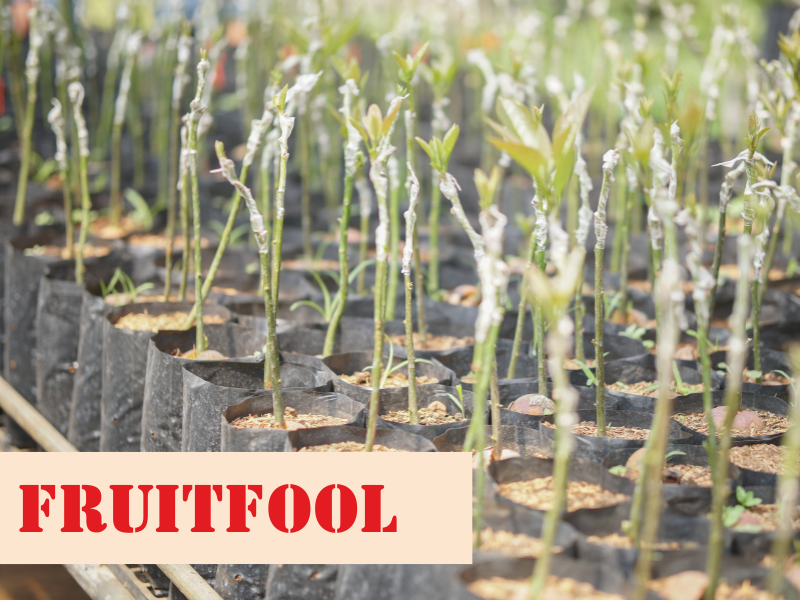Choosing the Right Fruit Tree Variety: Your Complete Guide to Success
- flourishdigital
.png/v1/fill/w_320,h_320/file.jpg)
- Jul 12
- 4 min read
Updated: Jul 28
Selecting the perfect fruit tree variety for your garden can feel overwhelming with hundreds of options available. Whether you're a beginner gardener or an experienced orchardist, choosing the right variety is crucial for years of successful harvests. Here's your comprehensive guide to making the best choice for your specific situation.
Understanding Your Growing Conditions
Climate and Hardiness Zones
Know Your Zone: New Zealand's diverse climate spans multiple hardiness zones, from Zone 8a in cooler southern regions to Zone 10b in warmer northern areas. Each fruit variety has specific zone requirements - planting outside these ranges often leads to poor performance or tree failure.
Seasonal Considerations: Consider your area's:
Average winter minimum temperatures
Frost dates and frequency
Summer heat patterns
Rainfall distribution
Wind exposure
Pro Tip: Use our climate zone filter to instantly find varieties suited to your specific location.
Space and Location Planning
Garden Size Matters:
Small gardens: Choose dwarf varieties or consider espalier training
Medium gardens: Semi-dwarf trees offer good balance of size and production
Large properties: Standard trees provide maximum harvest but need adequate spacing
Sunlight Requirements: Most fruit trees need 6-8 hours of direct sunlight daily. Morning sun is particularly important for disease prevention.
Matching Varieties to Your Needs
Harvest Timing Strategy
Extended Season Planning: Rather than choosing varieties that all ripen simultaneously, plan for succession harvesting:
Early Season (December-January): Early apricots, cherries, and strawberries
Mid Season (February-March): Peak stone fruit season, early apples
Late Season (April-May): Late apples, quinces, late citrus
Storage vs. Fresh Eating:
Fresh eating varieties typically have shorter shelf life but superior taste
Storage varieties may sacrifice some flavor for longevity
Flavor Profiles and Uses
Culinary Applications:
Baking: Choose varieties that hold their shape (Granny Smith apples, firm pears)
Fresh eating: Prioritize sweetness and texture (Gala apples, Valencia oranges)
Processing: Consider juice content and acidity levels
Family Preferences: Survey your household's taste preferences - there's no point growing beautiful fruit that nobody enjoys eating.
Key Selection Criteria
Disease Resistance
Modern breeding has produced varieties with excellent disease resistance. Look for:
Fire blight resistance in apples and pears
Brown rot resistance in stone fruits
Citrus canker resistance in citrus varieties
Resistant varieties reduce maintenance and eliminate need for chemical treatments.
Pollination Requirements
Self-Fertile vs. Cross-Pollination:
Self-fertile varieties: Produce fruit alone (most citrus, many stone fruits)
Cross-pollination required: Need compatible varieties nearby (most apples, some pears)
Pollination Groups: When cross-pollination is needed, ensure varieties bloom simultaneously and are genetically compatible.
Maintenance Level
Low-Maintenance Varieties: Perfect for busy gardeners or beginners
Naturally compact growth
Disease resistant
Minimal pruning requirements
Consistent bearing
High-Maintenance Varieties: Suitable for dedicated gardeners
May require specialized pruning
More susceptible to pests/diseases
Need regular thinning or support
Special Considerations
Rootstock Selection
The rootstock significantly impacts:
Tree size: Dwarfing vs. vigorous rootstocks
Soil adaptation: Some rootstocks tolerate poor drainage or alkaline soils
Disease resistance: Rootstock can provide additional protection
Longevity: Quality rootstocks extend tree life
Check our rootstock information section for detailed compatibility charts.
Heritage vs. Modern Varieties
Heritage Varieties:
✅ Proven performance over decades
✅ Often superior flavor
✅ Cultural and historical significance
❌ May lack modern disease resistance
❌ Limited commercial availability
Modern Varieties:
✅ Bred for specific improvements (disease resistance, storage, appearance)
✅ Often more reliable performance
✅ Better documented characteristics
❌ May lack the complexity of heritage flavors
❌ Less genetic diversity
Specialty Categories
Dwarf and Compact Varieties: Perfect for containers or small spaces Multi-grafted Trees: Multiple varieties on one tree - excellent for small gardens Espaliered Varieties: Trained flat against walls or fences Nut Trees: Consider almonds, walnuts, and hazelnuts for protein diversity
Making Your Final Decision
Research Process
Start with our variety selector tools - filter by your specific conditions
Read variety descriptions carefully - note bloom times, harvest periods, and special requirements
Check local recommendations - some varieties perform exceptionally well in specific New Zealand regions
Visit local orchards during harvest season to taste varieties firsthand
Common Mistakes to Avoid
❌ Choosing based on appearance alone - beautiful fruit photos don't guarantee good performance in your climate ❌ Ignoring pollination requirements - research before buying to avoid disappointing harvests ❌ Impulse buying - plan your orchard layout and variety selection carefully ❌ Overlooking mature size - today's small tree becomes tomorrow's large tree ❌ Focusing only on yield - quality and enjoyment matter more than quantity for home growers
Building Your Fruit Tree Portfolio
Start Small: Begin with 2-3 well-chosen varieties rather than trying to grow everything at once.
Plan for Succession: Choose varieties with different harvest times to extend your season.
Consider Your Future: Select varieties that will still suit your needs in 5-10 years as your garden and family evolve.
Getting Started
Ready to choose your perfect fruit tree varieties? Use our comprehensive variety selection tools to filter options by:
Your specific climate zone
Available space and preferred tree size
Desired harvest timing
Maintenance level preferences
Flavor and use requirements
Remember, the "perfect" variety is the one that thrives in your specific conditions while meeting your family's needs and preferences. Take time to research, plan carefully, and don't hesitate to seek advice from local experts.
Happy growing!
Explore Our Tools:
Need Help? Join our community of New Zealand fruit growers for personalized advice and local recommendations.






Comments